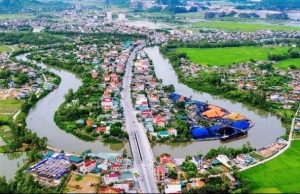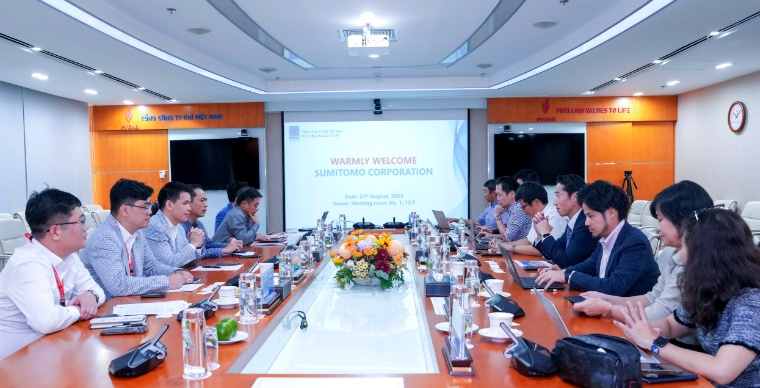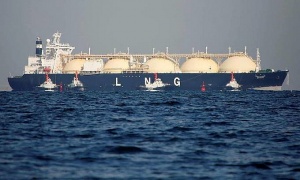Liquefied natural gas among strongest solutions in transitioning from coal
LNG programmes with future green hydrogen and carbon capture capabilities as an alternative for replacing a few new coal projects with LNG should be supported. However, LNG needs a regasification plant, deepwater port, and other logistical needs to supply gas as a fuel for power generation. Thus, it is not the answer for all coal-fired power plants seeking conversion from coal.
 |
| John Rockhold - Energy Committee chair, American Chamber of Commerce in Vietnam |
It is important to consider Vietnam’s energy security needs – affordable, reliable, and sustainable electricity supply for Vietnam’s socioeconomic development. In the United States, we have learned that green hydrogen and green ammonia are not affordable or sustainable today. Carbon capturing is extremely costly.
Hence, there are additional more suitable alternatives that meet Vietnam’s coal transition we have seen from the American Coal Council. One example is the Rivotto Nx25 solution, an innovation from the private sector that is gaining traction in the global community, including in South Asia.
Fossil fuels are low-cost, dense sources of energy. Fossil fuels are not bad – in fact, they make nations and communities strong, powerful, and safe. The problem stems from the emissions that come from them. The Nx25 solution enhances the good and eliminates the bad in fossils fuels. It removes noxious gases from the equation, while supplying additional energy to the system.
We also see that Henry Hub natural gas from the US, which is developed with the highest environmental standards, is currently standing at around $2.5 per million BTU. This is a low-cost fuel that can also benefit from new technology to burn even cleaner LNG. It would be furnished through fixed long-term contracts, similar to the approach used to supply Europe and China currently.
By the time a new Vietnamese LNG project is constructed, the US will have an operational west coast LNG terminal catering to Asia through the new Alaska gas programme, keeping costs low. Presently, Vietnam has projects ready to move forward, only pending a power purchase agreement (PPA), and we anticipate that after several years and numerous MoU ceremonies, it will commence in Son My of the central province of Quang Ngai.
Investing in LNG-to-power is appealing. However, this should follow transparent bidding procedures aligned with both Vietnamese and international standards. Bidders should demonstrate their possession of billions of US dollars in equity and financing, secured long-term LNG supply contracts, and experienced professionals for terminals and power plant investments, as well as designs and equipment capable of transitioning when it becomes economically viable.
Collaborating with Vietnamese partners and enhancing local capabilities, particularly within the financing sector, holds significant importance.
The Power Development Plan VIII (PDP8) is what I refer to as a living document that recognises LNG as a transition solution, provided that a related project aligns with the plan’s mechanisms, is socially and economically feasible, ensures power security, addresses regional power shortages, can be financed through a risk-sharing PPA, and aligns with Vietnam’s 2050 objectives for zero carbon emissions.
The PDP8 envisions that Vietnam will have to bring in LNG imports to provide a significant portion of the country’s total electricity generation capacity by 2030 to support the country’s diminishing domestic gas production. In the future, the government plans to incorporate hydrogen into gas and LNG projects by 2050, once the technology and costs become feasible.
While the PDP8 sets a target, the question remains whether investors, suppliers, and operators can align with Vietnam’s long-term goals using LNG.
LNG is considered an integral component of Vietnam’s strategy, yet the task of developing and operationalising LNG-to-power projects within this decade presents a challenge. To address the growing demand for power generation, particularly in the context of diminishing domestic gas supply, Vietnam needs to import LNG to make up for the shortage.
However, the volatility in prices over the past two years has introduced substantial variability into the market dynamics. Such fluctuations hold the potential to significantly impact the cost structure associated with LNG utilisation within Vietnam’s energy landscape.
The current global LNG market is characterised by instability engendered by geopolitical shifts on an international scale. The establishment of projects utilising LNG for power generation necessitates a substantial amount of capital, alongside cutting-edge technological expertise. This requires experience and financial capacity. Competent authorities often lack experience in this field, which affects the selection of investors for the project. Furthermore, there is no adequate mechanism for determining electricity prices for LNG power projects.
 | Nghe An promotes development of Quynh Lap LNG-fueled power project The People's Committee of central Nghe An province has requested relevant departments, branches, localities and agencies to strictly implement assigned tasks to ensure quality and development progress of Quynh Lap liquefied-natural-gas (LNG)-fueled power project. |
 | Sumitomo to cooperate with PV Gas in LNG Sumitomo Corporation expects to collaborate with PV Gas in developing liquefied natural gas projects chain in Van Phong Economic Zone of the central coastal province of Khanh Hoa. |
 | Phu My 3 to rely on costlier LNG The Phu My 3 power plant faces challenges as it transitions from BOT (build-operate-transfer) to Vietnamese control in March next year, marking the culmination of a 20-year contract, according to a recent announcement from the Ministry of Industry and Trade (MoIT) |
What the stars mean:
★ Poor ★ ★ Promising ★★★ Good ★★★★ Very good ★★★★★ Exceptional
Related Contents
Latest News
More News
- Linking sci-tech and innovation to Vietnam’s net-zero future (December 18, 2025 | 14:31)
- Driving double-digit growth through green and circular transformation in Vietnam (December 17, 2025 | 09:00)
- Standard Chartered and ACCA deepen collaboration to develop Vietnam’s talent for a sustainable future (December 15, 2025 | 18:18)
- Schaeffler reports strong early output from Dong Nai solar project (December 12, 2025 | 15:16)
- Forestry conference highlights biodiversity and sustainability goals (December 09, 2025 | 13:35)
- Home Credit honoured among top 10 sustainable companies in trade and services (December 09, 2025 | 12:18)
- SCG and seven member companies honoured in Top 100 Sustainable Businesses 2025 (December 08, 2025 | 09:00)
- Nestlé Vietnam pioneers sustainable development and promotes business connections (December 06, 2025 | 12:09)
- CSI 2025 highlights rise of Vietnam’s green champions (December 06, 2025 | 09:00)
- Acecook Vietnam named among top 100 sustainable businesses (December 06, 2025 | 08:00)

 Tag:
Tag:






















 Mobile Version
Mobile Version